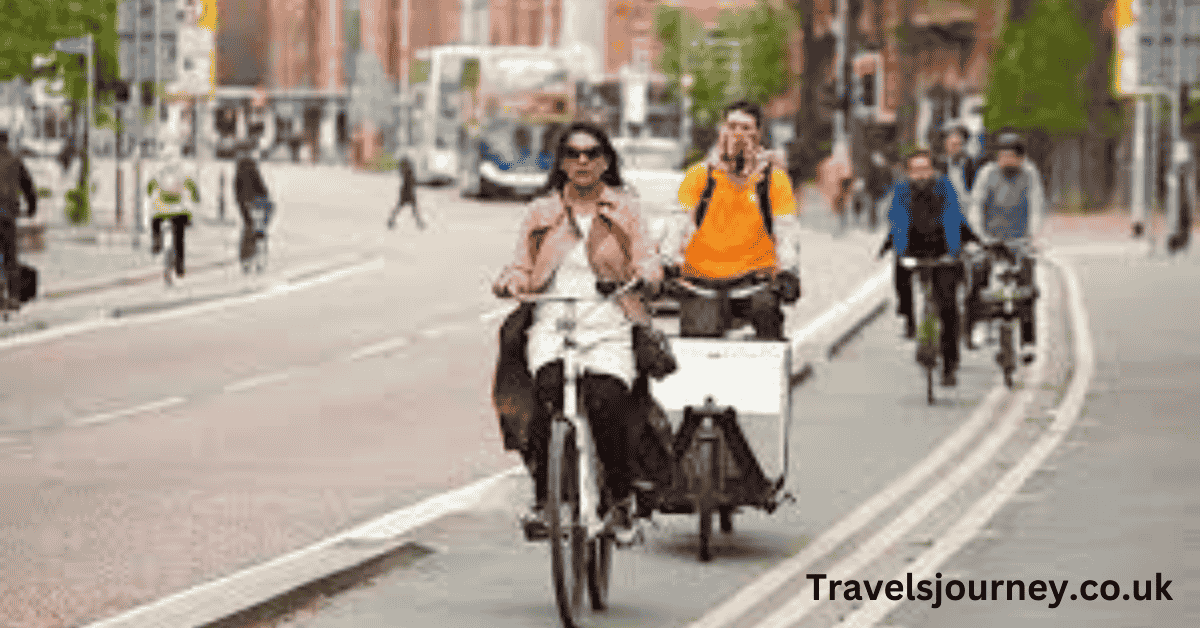Physical Address
304 North Cardinal St.
Dorchester Center, MA 02124
Physical Address
304 North Cardinal St.
Dorchester Center, MA 02124

Active transport step in, Active transport in travel and movement domain. Whether you’re walking or cycling to work or exploring a new city, there are plenty of ways to stay fit while discovering new places. What is active transport, and which one is a far better example?
In this article, we will discuss what are the various types of active transport, its advantages and which one can be the best example.
Active transport encompasses any kind of movement that does not rely on motorized vehicles, but instead requires human effort. Active transport includes walking, cycling, running, and even skateboarding. Active transport is, in contrast with passive transport (such as driving or public transport), actively purported to be healthy by: (a) encouraging physical activity; and (b) reducing dependence on fossil fuels.
Cycling is known to have an eco-friendly and health-conscious lifestyle, whether to work or for leisure. Cities across the globe are investing in infrastructure such as bike lanes and pedestrian-oriented streets to persuade more people to try active transport.
There are several types of active transport, each with its own advantages. Below are some of most popular forms:
Walking is the easiest and most the common type of active transport. It doesn’t require special equipment, it’s free and can be done by just about anyone. Whether exploring a new city or getting to work, this type of locomotion offers myriad health benefits: better cardiovascular fitness and mental health, not to mention less pollution from cars and trucks.
Another of the most efficient, sustainable forms of transport is cycling. Cycling, whether on a regular bicycle or an electric-assisted bike (e-bike), is much quicker than walking, but still a great workout. Several cities are doing much to promote cycling as a viable mode of transport by introducing bike-sharing scheme, exclusive barriers fitted bike lines, etc.
If you are looking for a more challenging workout, you may consider running jog as a mode of transport. Though less common, some sprint to work or explore new destinations at full speed as part of their workout.
Another option for those more inclined to hit the pavement is to run or jog for transport. Working out far less often than walking or cycling, some people choose to run into the workplace, getting into new places while staying healthy.
Traditional kick scooters may be considered a form of active transport which requires users to physically propel the vehicle. Electric scooters offer some assist, but are, by necessity, an active form of transport and reside somewhere in the middle from an active-transport versus passive-transport standpoint.
While all of the above methods have their merits, cycling stands out as the best example of active transport for several reasons:
You can cover longer distances in a shorter period of time than if you were walking. For commuters, cycling can be a quicker option than public transport or being stuck in traffic in busy cities. But many travelers also agree that the best way to learn about a new city is on two wheels, at their own pace.
Riding a bicycle is one of the best forms of cardiovascular exercise, toning up the legs, hearts, or other parts of the body. Cycling is low-impact, so it’s easier on the joints than high-impact exercises like running, and can be done by a broader population.
These are one of the biggest advantages of cycling. These vehicles are not only energy efficient, but produce no emissions and require significantly less material to produce and keep in good working order than cars or motorbike. Cycling rather than driving however, will help you lower your carbon footprint considerably.
Bicycling is one of the most inexpensive modes of transportation. And it is true that once you purchase a bicycle, your ongoing costs are next to nothing, there’s no fuel, no costly maintenance, and, often, no parking fees. Many cities also have bike-sharing programs, making it even easier to hop on a bike.
Cycling can easily be integrated with public transport, something less obvious with forms of active transport. Many buses, trains, and ferries have bicycle carrying capacity, enabling cyclists to move easily between transport networks.
Cycling infrastructureLong Are cities around the world investing massively in cycling infrastructure for the benefit of the individual and the planet. Bike lanes, secure bike parking, and cycling-supportive policy makes it easier than ever for people to bike as their primary mode of transport.
If you’re a traveler hoping to infuse your journeys with a greater dose of sustainability and health, here are some suggestions for incorporating active transport into your outings:
Active transport is a means of transport that is essential, sustainable and can be used for commuting, exercising or discovering new places. Although walking, jogging, skateboarding, and scootering are all great forms of active transport, cycling is the best form because it is far more efficient, has greater health benefits, is comparatively better for the environment, and is much less expensive.
Adding more active transport options to how you go about your daily life and what you do in your travels, creates healthier and greener worlds. So, the next time you go on a trip, try leaving the car behind and hop on a bike or explore a new destination on foot, you’ll open yourself to so much more along the way!
Travelsjourney.co.uk offers more travel tips and guides, so start planning your next adventure with active transport!